If you’re like most people, you probably enjoy spending time in your garden. Not only is it a great way to get some exercise, but it’s also a wonderful way to relax and enjoy the outdoors. However, if you’ve been experiencing problems with gnats, then your enjoyment may be spoiled. Gnats can be quite annoying, and they can also damage your plants. In this article, we will discuss how to get rid of gnats in your vegetable garden using a variety of methods. Let’s get started!
Gnats and Their Behavior
Gnats are small, fly-like insects that can be a nuisance in the home. They are attracted to moisture and can often be found near drains, sinkholes, or other damp areas. Gnats are also often seen near potted plants or in vegetable gardens.

Gnats typically lay their eggs in moist soil, so they are often found near potted plants or in gardens. The larvae of some species of gnats can damage plants by eating their roots. While they do not bite or sting, they can be a nuisance because of their constant buzzing and flying around. [1],[2],[3]
Types of gnats
If that wasn’t enough, there are actually multiple types of gnats. Different species can be found in different parts of the world and they all have different behaviors.
Fungus gnats
The most common type of gnat is the fungus gnat.
As their name suggests, these gnats are attracted to damp, humid environments where they can lay their eggs in moist soil or decaying organic matter. The larvae of fungus gnats feed on fungi, algae, and other organic matter in the soil. This feeding can damage plant roots and make it difficult for plants to take up water and nutrients. In addition, fungus gnats can transmit plant diseases from one plant to another.Fungus gnats are surprisingly attracted to light, so they can often be seen near windows or doors.
Fruit flies
Fruit flies are small, reddish-brown or tan flies that are often seen near ripe fruit or vegetables. As their name suggests, fruit flies are attracted to the sweetness of fruits and vegetables. These pests lay their eggs near the surface of fermenting materials, and the larvae feed on the decaying organic matter, so they can often be found near garbage cans or compost bins. The larvae of fruit flies feed on decaying organic matter, so they can also damage plants by eating their roots. While fruit flies are a nuisance in the home, they can also spread diseases to humans and animals.
Buffalo gnats
Buffalo gnats, also known as black flies, are small, stout-bodied bugs that are about ⅛-inch long. They have a humpbacked appearance and their wings are darker than their bodies. Both male and female buffalo gnats feed on the blood of animals, including humans. The females need blood to mature their eggs. Buffalo gnats are found near running water, such as streams or rivers. They’re most active in late spring and early summer.
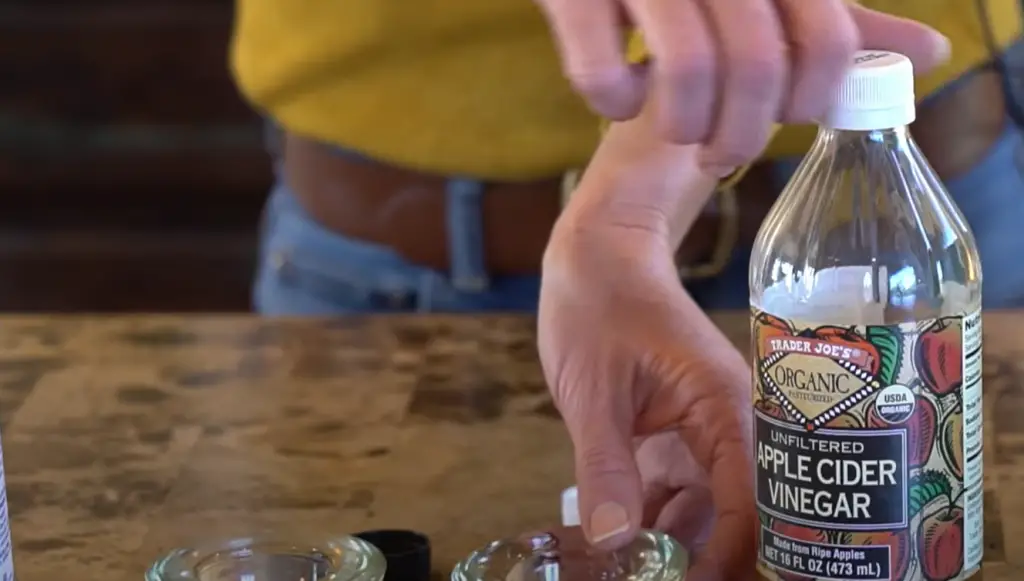
While they’re not known to transmit diseases to humans, buffalo gnats can be a nuisance because of their painful bites. When they bite, they inject saliva into the skin that contains anticoagulants and other substances that can cause an allergic reaction in some people. This can result in redness, swelling, and itching at the bite site.
Drain flies
Drain flies are small, dark-colored insects that are most often found near sources of water. They breed in stagnant water and their larvae feed on organic matter. Drain flies can be a nuisance because they often congregate around drains and other wet areas in homes and businesses.
These pests can be difficult to control because they reproduce quickly and their larvae are resistant to many common pesticides. The best way to get rid of drain flies is to remove their breeding grounds by cleaning and repairing any leaks or drainage problems in your home or business. [2]
Why Are Gnats Attracted to Gardens
Gnats are attracted to gardens for a variety of reasons. One reason is that they are attracted to the moisture in the soil. Another reason is that they are attracted to the decaying matter in your garden, such as dead leaves and compost. Lastly, gnats are also attracted to light. If you have a garden that is well-lit, then it is likely that you will experience more problems with gnats than if your garden was in a shady area.
How to Get Rid of Gnats in Vegetable Garden
Now that you know why gnats are attracted to gardens, you can take steps to prevent them from being a problem in your garden. There are a few things that you can do to get rid of gnats in vegetable gardens.
Set a fruit trap
Gnats are attracted to the smell of overripe fruit, so you can use this to your advantage by setting a trap. Fruit traps are an easy, effective way to get rid of gnats in your vegetable garden. All you need is a ripe piece of fruit, some sugar water, and a jar or bottle. Cut the fruit into small pieces and put it in the jar or bottle. Add sugar water to the jar or bottle until the fruit is covered. Place the trap near where you’ve seen gnats and wait for them to be drawn in by the sweet smell. Once they’re inside, they won’t be able to escape and will drown in the sugar water. You’ll need to empty and refill your trap every few days.
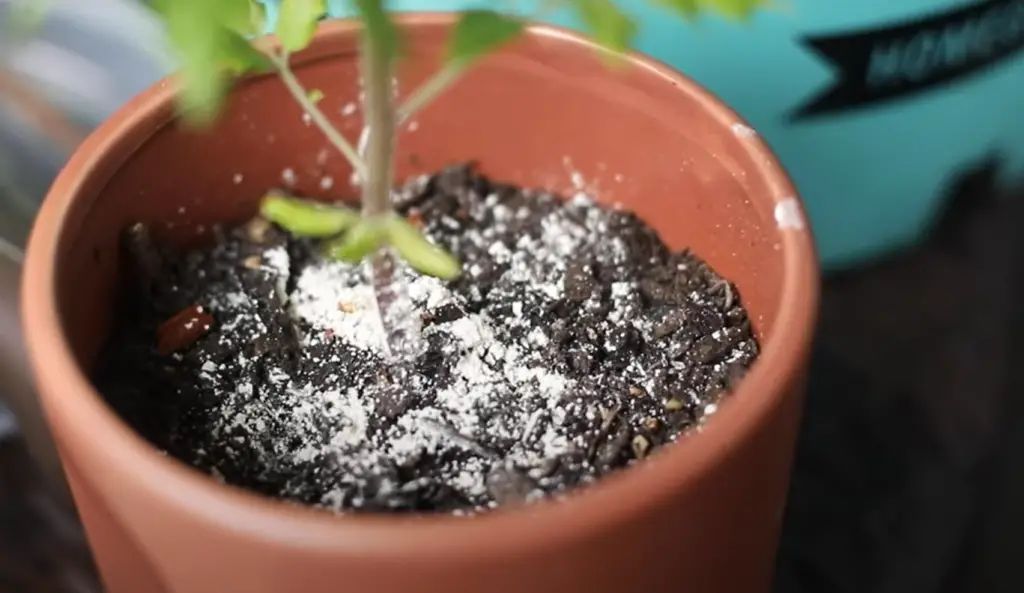
There are a couple of things to keep in mind when using fruit traps:
- The trap won’t work as well if the fruit isn’t ripe. Make sure to use ripe fruit so that the gnats are attracted to it.
- You may attract other insects with a fruit trap. If you don’t want to attract other insects, you can try using a different bait like rotting meat or overripe vegetables.
- Fruit traps won’t get rid of all the gnats in your garden. They’re a good way to reduce the population, but you’ll likely still see some gnats around even after using a trap.
You can make your own fruit traps and experiment with them. If you decide to make your own trap from scratch, be sure to clean and sterilize the jar or bottle before using it. This will help prevent the spread of disease.
Install sticky traps
Another effective way to get rid of gnats in your garden is to install sticky traps. These are small, yellow or blue traps that are coated with a sticky substance. Gnats are attracted to the smell of these traps and they will get stuck on the adhesive. You can also place these near the fruits used as a bait.
You can purchase sticky traps at your local hardware store or online.
Check the traps regularly and dispose of them when they are full.You can also make your own sticky traps by coating pieces of paper with petroleum jelly or honey. Then, you can place these traps around your garden.
Another option is to purchase yellow sticky traps that are specifically designed to catch fungus gnats. These can be placed near problem areas in your garden, such as near potted plants or in greenhouses.
Whichever type of trap you choose, make sure to check it regularly and dispose of the gnats that you catch. [1],[4]
Clean drains and gutters
One of the places that gnats like to lay their eggs is in drains and gutters. If you have a drainage problem in your garden, it will attract gnats. To get rid of them, you need to clean your drains and gutters.
This will help to keep the leaves and debris from building up in your gutters.In addition, you should make sure that there is no standing water in your garden. Gnats are attracted to stagnant water, so if you have any puddles or ponds in your garden, they will be attracted to them.
Spray neem oil
Neem oil is a natural product made from the seeds of the neem tree. It has a wide range of uses, including as an insecticide and fungicide. Neem oil is a natural, non-toxic way to get rid of gnats in vegetable garden. You can buy neem oil at most garden stores or online. Neem oil works by suffocating the gnats and their larvae.
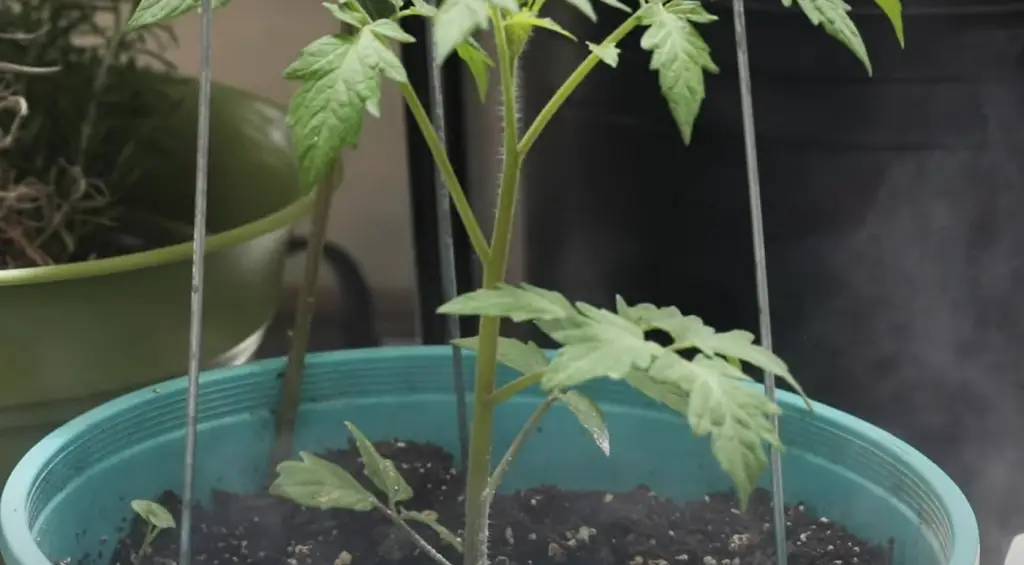
To use neem oil, mix it with water according to the instructions on the bottle. Then, use a spray bottle to apply it to your plants. Be sure to follow the directions on the product label carefully. Neem oil can be harmful to people and animals if used improperly, so take care when using it. You will need to reapply neem oil every few days until you see a decrease in the number of gnats in your garden. Prioritize coating the underside of the leaves where the gnats are likely to lay their eggs.
If you have pets or children, make sure they are not present when you are spraying neem oil. You should also avoid spraying neem oil on hot days, as it can cause leaf burn. [3]
Introduce nematodes to your garden
Nematodes are tiny, parasitic worms that kill gnats and their larvae. They are safe to use around people and animals and they will not harm your plants. You can purchase nematodes online or at a garden store. To introduce them to your garden, mix them with water according to the instructions on the package. Then, use a spray bottle to apply them to the soil around your plants. The nematodes will enter the soil and start attacking the gnats.
Nematodes are most effective when used in early spring or late summer. They will remain in the soil for several weeks, so you only need to apply them once per season.
One thing you should keep in mind is that nematodes won’t distinguish between beneficial and destructive insects so use them carefully. For example, you should never use them in flower beds because they will kill bees and other pollinators. [2],[4]
Use a safe insecticidal spray
If you have a serious infestation of gnats, you may need to use an insecticide. Be sure to choose a product that is safe to use around people and animals. You can find safe insecticidal sprays at most garden stores or online.
To use the spray, you may or may not need to mix it with water according to the instructions on the bottle. Then, use a spray bottle to apply it to your plants.
While some insecticidal sprays may be relatively safe, it’s still best to avoid exposing children and pets to them. Build a fence or tell your children to avoid the treated area of your garden for a while.
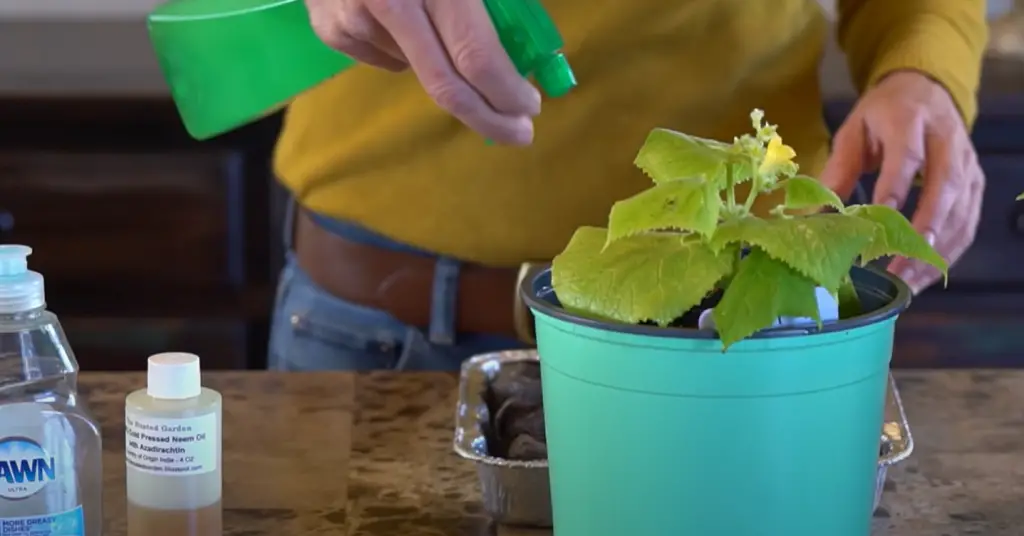
Just like with nematodes, you should use caution when using an insecticide. Some products can be harmful to people and animals if used improperly, so make sure to follow the directions on the label carefully. Insecticides can also kill beneficial insects, so use them sparingly and only as a last resort. [3]
Spread diatomaceous earth
Diatomaceous earth is a type of sedimentary rock that’s made up of the fossilized remains of tiny algae-like creatures called diatoms. The diatoms have skeletons made of silicon dioxide, which is also known as silica.
Diatomaceous earth has a variety of uses, but it’s most commonly used as an insecticide. You can find diatomaceous earth at most garden stores or online. To use it, simply sprinkle it around the perimeter of your garden. You can also spread it on the soil around your plants. Be sure to avoid getting it on the leaves of your plants, as it can cause leaf burn.
The sharp edges of the diatomaceous earth particles cut through the exoskeletons of insects and cause them to dehydrate and die. Diatomaceous earth is effective against a wide range of pests, including gnats, aphids, thrips, whiteflies, and caterpillars.
One of the advantages of using diatomaceous earth to control pests is that it’s safe for humans and animals. Still, it should be used with caution, especially if you don’t want to harm any helpful insects in your garden, like bees.
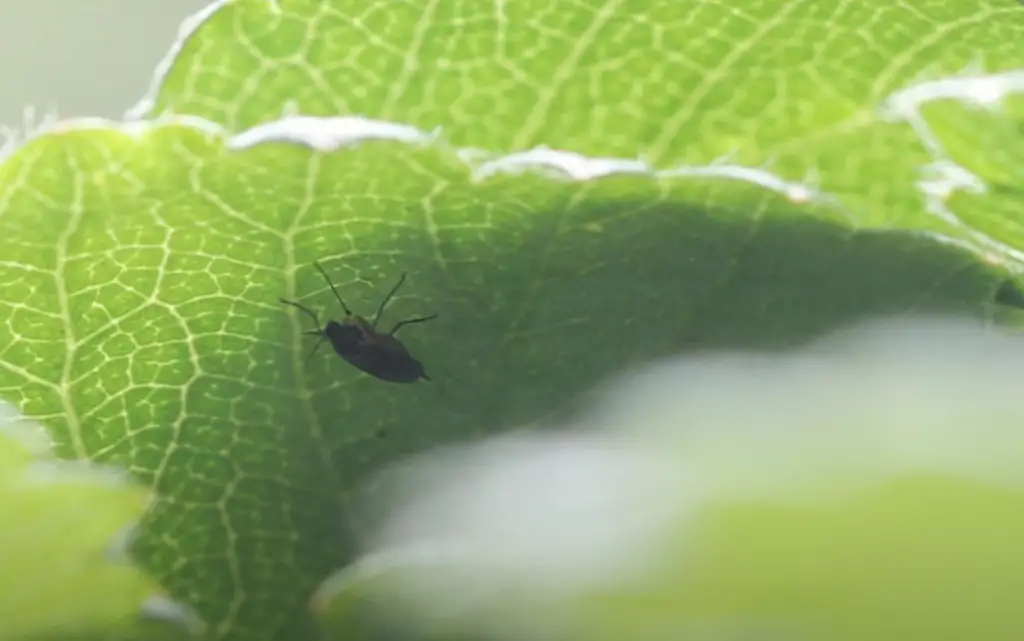
As you can see, there are a few different ways to get rid of gnats in your vegetable garden. By using one or more of these methods, you can get rid of gnats and keep them from coming back. Try out a few different methods and see which one works best for you. With a little bit of effort, you can get rid of those pesky gnats for good!
FAQ
How do I get rid of gnats in my plants without killing them?
There are a few things you can do to get rid of gnats in your plants without harming them. One is to mix up a solution of vinegar, water, and dish soap and spray it on the plant leaves. This will kill the adult gnats. Another is to put out yellow sticky traps near your plants. The gnats will be attracted to the color and then get stuck on the adhesive. Finally, you can make a homemade trap using a jar, some fruit, and some water. The gnats will be attracted to the fruit and then drown in the water.
How do I get rid of gnats in my soil naturally?
There are a few things you can do to get rid of gnats in your soil naturally. One is to add organic matter to your soil, such as compost or manure. This will help to improve the drainage and aeration of your soil, making it less hospitable for gnats. You can also try adding beneficial nematodes to your soil, which will help to kill any larvae that are present. Finally, make sure that you are watering your plants regularly and deeply, as this will also help to discourage gnats from taking up residence in your garden.
How do you get rid of gnats infestation in soil?
The best way to get rid of gnats infestation in soil is by using a product that contains the natural ingredients neem oil or pyrethrin.
To use neem oil, mix together equal parts of water and neem oil. Then, add a few drops of dish soap to help the mixture stick to the plants. Next, apply the mixture to the affected areas of your garden. Finally, wait a few days and see results!
How do I get rid of plant gnats fast?
There are a few things you can do to get rid of plant gnats quickly. First, make sure to keep your garden clean and free of debris. This will remove any potential breeding grounds for the gnats. Second, water your plants in the morning so that the soil has time to dry out during the day. This will help prevent the gnats from laying their eggs in the moist soil. Finally, use traps or barriers to physically remove the gnats from your garden.
There are a few different types of traps you can use to catch plant gnats. Yellow sticky traps are one option. You can also make your own trap by filling a small container with apple cider vinegar and placing it near your plants. The Gnats will be attracted to the vinegar and drown in the liquid.
Useful Video: Easy One Step – How To Get Rid Of Fungus Gnats – 100% Guarantee – Fungus Gnat Prevention
Conclusion
Fungus gnats are small, dark, delicate-winged insects. The larvae of fungus gnats feed on organic matter in the soil and can harm plant roots. If you have a problem with fungus gnats, there are several things you can do to get rid of them. If you have a gnat problem in your garden, there are several things you can do to get rid of them. You can install sticky traps, spray neem oil, or introduce nematodes to your garden. These methods are all safe and effective ways to get rid of gnats in vegetable gardens. But most importantly, keep your garden clean and free of rotting organic matter to prevent fungus gnats from laying their eggs in the first place. With a little bit of effort, you can get rid of these pesky insects for good. We hope this guide was helpful and that you were able to get rid of the gnats in your garden! If you have any questions or comments, please feel free to leave them below. Thank you for reading!
References:
- https://www.homestead-acres.com/how-to-get-rid-of-fungus-gnats/
- https://www.epicgardening.com/fungus-gnats/
- https://homeguides.sfgate.com/rid-gnats-vegetable-seedlings-77499.html
- https://suburbanhobbyfarmer.com/getting-rid-of-gnats/





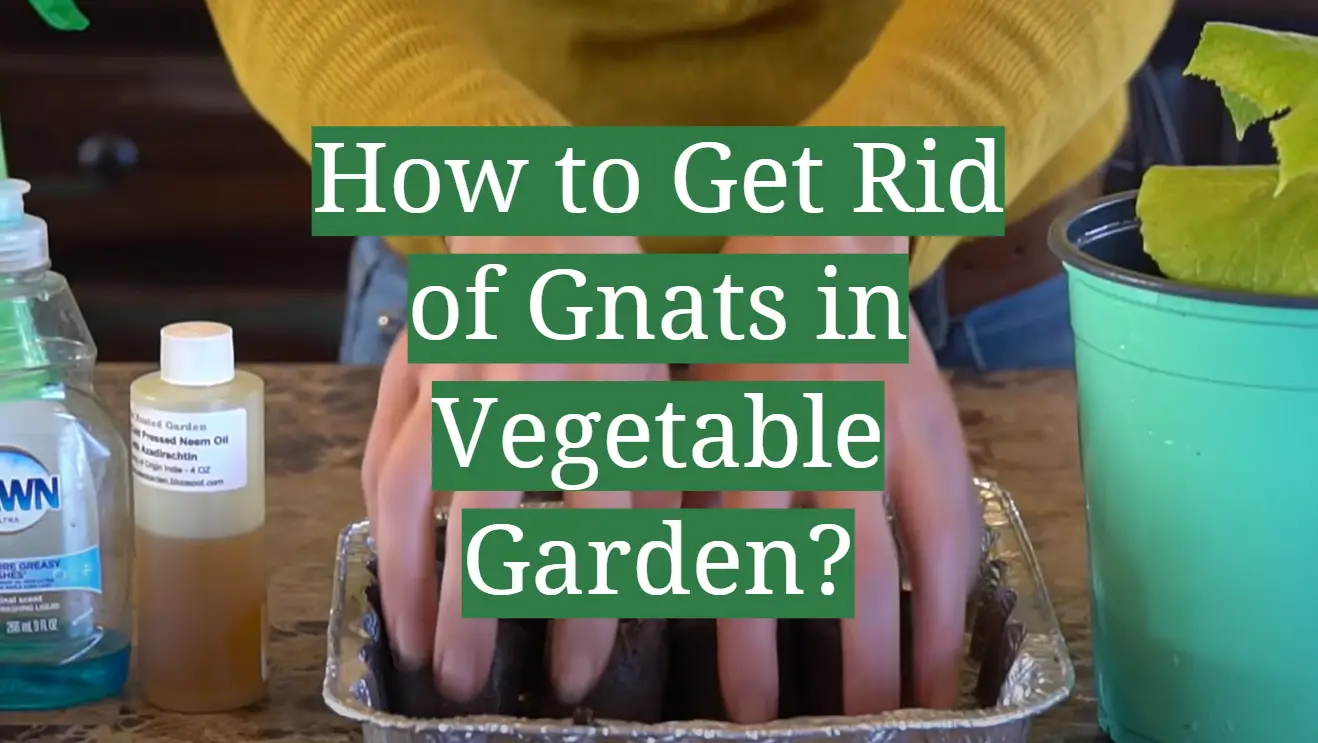


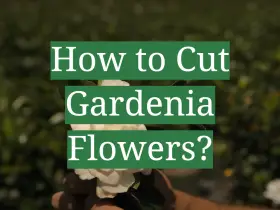
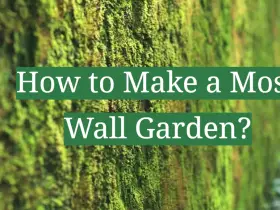
Leave a Reply
View Comments